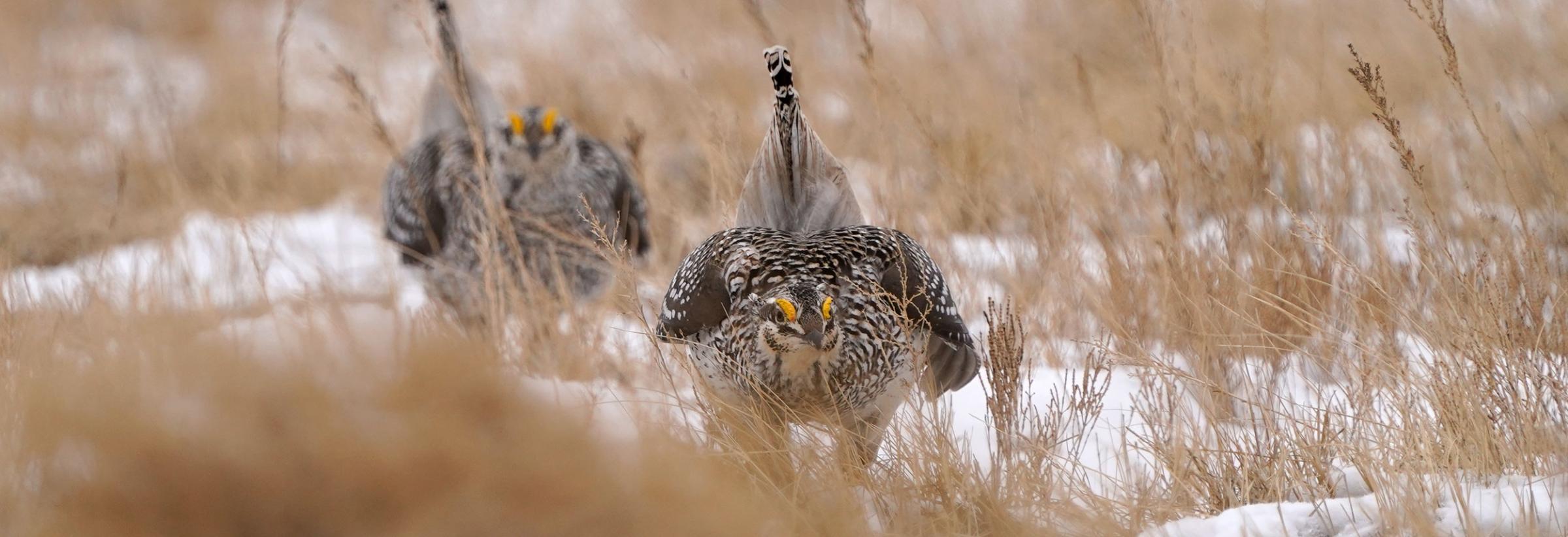
Back Cast
Three of us are sitting in a portable wildlife viewing blind designed for two somewhere in Grand Forks County. It’s mid-April and there’s still a bit of snow on the ground, enough of it to remind us that while we’re over winter’s hump, the potential of more weather is real.
We have all the windows open in the blind, some of which are the shape of the inverted triangular yellow PLOTS signs that mark the land we are sitting on. This means nothing, of course, and I don’t know why I even bother to draw the comparison. What I do know is that I would love to zip the windows shut, maybe just for a bit, to give ourselves a break from the wind.
To do so, this close to sunrise, would be a mistake with the promise of birds arriving on this piece of prairie at any minute pretty good.
We’ll see sharp-tailed grouse, certainly, which is never a bad thing. I’ve yet to tire of the bobbing and strutting of the males during this time of courtship. Teamed with the cooing and the loud, clicking-like sound the birds make while rapidly stomping their feet on the prairie, their performance is always worth what you pay in lost sleep to be in attendance.
What we’re here for, cold fingers crossed, are prairie chickens. What I know about these birds I’ve read, plucked from knowledgeable biologists or watched on video. None of this matters much, at least to me, without viewing the birds up close, doing their thing in spring as they are seemingly driven without thought, but steered by an unmistakable desire to parade around and make noise.
During the good prairie chicken years, say, from 1900 to 1930, prairie chickens could be found, many times in great abundance, in most reaches of North Dakota except the rugged badlands.
In “Feathers from the Prairie,” a Game and Fish Department publication, it is written: “Our grandparents knew him for his reverberating courtship booming, exorbitant numbers, and fine-flavored meat at the dinner table.”
Old-timers called this bird that followed on the heels of settlers to North Dakota yellowlegs, fool hen, kettle drummer, boomer, the list goes on.
“When I came to our homestead nine miles south of Jamestown in 1892 there were prairie chickens everyplace. The ‘broadtails’ were thick from the 1890s to 1930s,” said Ben Baemen, Jamestown, in “Feathers.”
“I remember during the drought and Depression years the Red Cross passed out rough type flour called Red Dog. It made fairly good bread and we ate lots of jackrabbits and prairie chickens with it. If it hadn’t been for the wildlife during the Depression, we would have starved and so would lots of other people,” said Charles Wenz, New Rockford, in “Feathers.”
While I certainly don’t long for the hardship and heartache of that era, it would have been something to see prairie chickens in great numbers. To hear the booming vocalization, reportedly from a distance of 2 to 3 miles on a windless morning, of the males in heated courtship.
The birds have arrived, almost all at once, as if they were summoned by a starter’s gun that only they can hear. Even in the confusion of stamping, darting and pairs and pairs of outstretched wings cutting quickly through prairie grasses, it appears that of the 18 to 20 birds in attendance, all are sharp-tailed grouse.
Maybe we’re missing something. Maybe it’s the low light. Maybe the prairie chickens are running fashionably late.
Maybe. Maybe. Maybe.
Yesterday, on an equally dreary day, but with more wind, Susan Felege, associated professor of wildlife ecology and management at the University of North Dakota, described, with great animation, male prairie chickens on their booming grounds.
“Then you see the big, beautiful, bright orange air sacs on their neck … and they put their wings out and make this booming sound that, when you’re sitting there, you feel the boom,” she said.
Until next spring, I’ll have to take her word for it.
